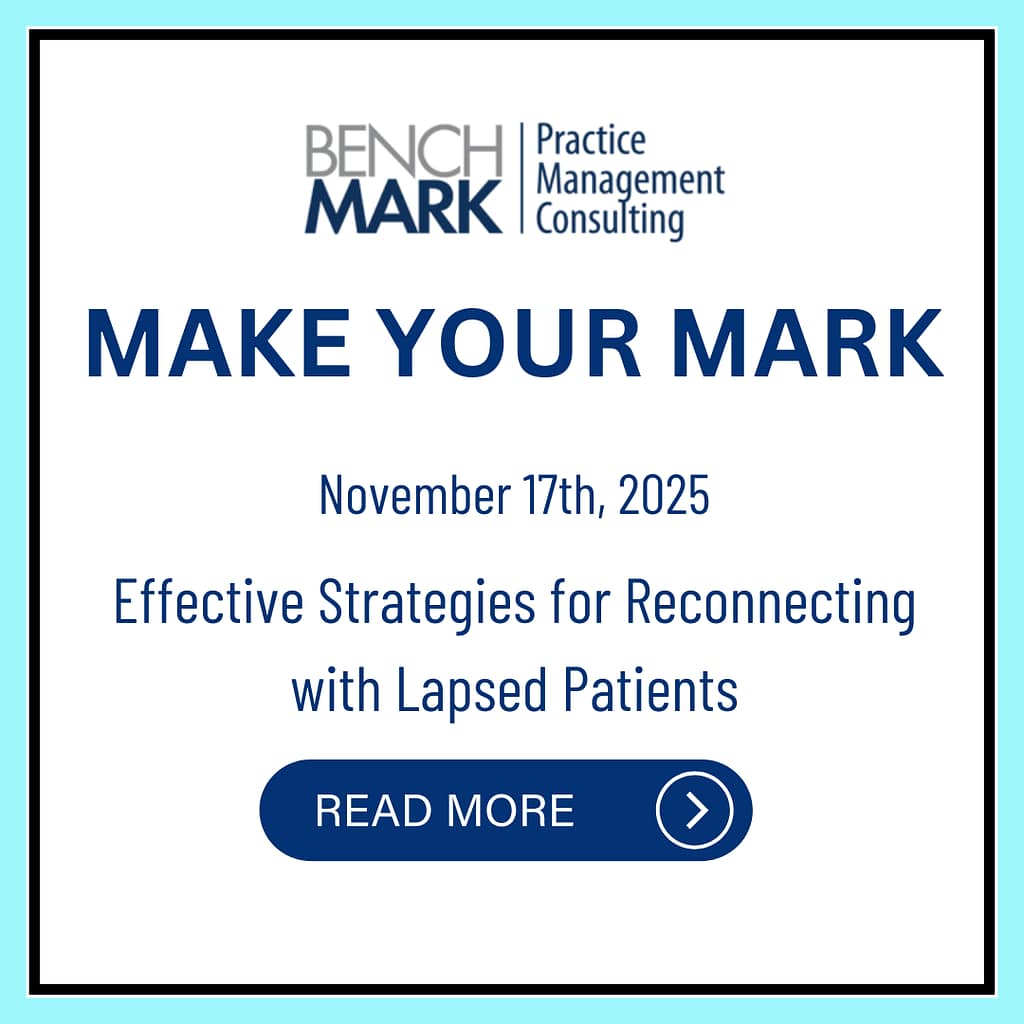When you review your list of outstanding patients, do you find yourself wondering why so many names never make it onto the schedule or why your calls and messages go unanswered? You’re not alone. Many practices face the same challenge.
First, it’s important to understand what’s realistic when it comes to patient retention. The industry benchmark for hygiene retention sits around 80%. That means if your practice has 1,200 active patients, you can expect to see about 100 patients each month for hygiene and recall exams (not including scaling-only appointments). In reality, most offices will see closer to 80 patients per month. This isn’t about making excuses, it’s about understanding the data so you can set achievable goals.
However, many practices fall below that 80% benchmark despite multiple outreach attempts. If your team has been diligently calling, texting, or emailing without much success, it may be time to shift your approach.
Here are some proven strategies to improve your connection rate and re-engage lapsed patients:
1. Refresh the Caller’s Mindset
The person making the calls plays a huge role in patient response. If an administrator feels frustrated or discouraged by repeated rejections, that energy will carry through in their tone. Similarly, if they sound bored, patients will pick up on it immediately.
Consider having an objective team member listen to their tone or even record a few calls for feedback. A small shift in energy, warmth, and confidence can make a big difference.
2. Reevaluate Contact Frequency
Review how often and when your team is reaching out.
- For unscheduled patients: Begin reaching out 2–3 weeks before they’re due, and continue every three weeks afterward until contact is made.
- For patients who cancel: Follow up about two weeks after the cancellation, depending on the reason. Always note the reason for cancellation in their chart so future communication can be more personal. This shows patients that your office listens and cares about their circumstances.
All contact attempts, along with the communication method used, should be recorded in your practice software for accurate tracking.
3. Mix Up Communication Methods
While emails and texts are efficient, they can easily be ignored or deleted. A multi-channel approach is more effective.
Alternate between phone calls, emails, and text messages, and vary the time of day you reach out. If you’re familiar with a patient’s schedule, time your message or call when they’re most likely to respond.
4. Practice and Personalize Your Verbiage
Although scripts can be helpful, repeating the same phrasing too often can make messages sound robotic. Role-playing within your team can help develop fresh, natural language that still aligns with your practice’s tone and professionalism. Encourage team members to adapt the message while keeping the core intent consistent.
5. Acknowledge Prior Contact Attempts Politely
When patients haven’t responded, it’s okay to mention it in a friendly, respectful way. For example:
“Hi Adrian, this is Sarah from your dental office. Your last hygiene appointment was over six months ago, I’m sure time has flown by! We’ve had a bit of trouble reaching you and just wanted to confirm the best way and time to contact you.”
There’s no need to restate that you’d like them to book; that’s already implied from previous messages. This gentle reminder reinforces your commitment to care without sounding pushy.
The Bigger Picture
Maintaining strong relationships with lapsed patients doesn’t just fill your schedule, it strengthens your entire practice system. When one area (like recall) falters, other parts of your operation often follow. Proactively addressing patient communication keeps your schedule full and your practice thriving.
If you’d like more detailed guidance or support implementing these strategies, I’d be happy to connect with you further.




